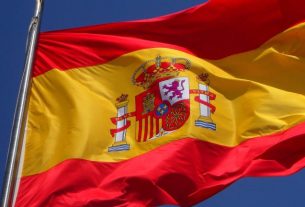Sweden voted in an election pitting the incumbent centre-left Social Democrats against a right-wing bloc that has embraced an anti-immigration stance.
Opinion polls predicted a razor-thin lead for Prime Minister Magdalena Andersson’s Social Democrats and an allied left-wing bloc after a campaign dominated by rising gang shootings and soaring electricity prices.
Polling stations opened at 8am (06:00 GMT) and closed at 8pm (18:00 GMT) with final results expected to be announced shortly thereafter.
An opinion poll published at the weekend by the Aftonbladet newspaper saw Andersson’s camp at 49.6 percent of the vote and the conservative bloc, which includes the far-right Sweden Democrats at 49.4 percent of the vote.
With steadily growing numbers of shootings unnerving voters, campaigning saw parties battle to be the toughest on gang crime, but surging inflation and the energy crisis in the wake of the invasion of Ukraine have increasingly taken centre stage.
Law and order is home turf for the right, but gathering economic storm clouds as households and companies face sky-high power prices may boost Andersson, seen as a safe pair of hands and more popular than her own party.
“My clear message is: During the pandemic, we supported Swedish companies and households. I will act in the exact same way again if I get your renewed confidence,” Andersson, 55, said last week in one of the final debates ahead of the vote.
Andersson was finance minister for many years before becoming Sweden’s first female prime minister a year ago. Her main rival is the Moderates’ leader Ulf Kristersson, who sees himself as the only one who can unite the right and unseat her.
“We will prioritise law and order, making it profitable to work, and build new climate-smart nuclear power,” Kristersson said in a video posted by his party. “Simply put, we want to sort Sweden out.”
Zeth Isaksson, a sociologist specialising in electoral behaviour at Stockholm University, told the AP news agency that Andersson’s image has benefitted from her experience in government.
“Magdalena Andersson is one of the most important factors in this election,” Isaksson said.
‘Red lines’
Kristersson has spent years deepening ties with the Sweden Democrats, an anti-immigration party with white supremacists among its founders. Initially shunned by all other parties, the Sweden Democrats are now increasingly part of the mainstream right.
For many centre-left voters – and even some on the right – the prospect of Jimmie Akesson’s Sweden Democrats having a say on government policy or joining the cabinet remains deeply unsettling, and the election is seen in part as a referendum over whether to give them that power.
“I’m fearing very much a repressive, very right-wing government coming,” said Malin Ericsson, 53, a travel consultant outside a voting station in central Stockholm.
Paediatrician Erik George, 52, said he thought the election campaign had been marked by a rise in populism.
“I think that times are really tumultuous and people have a hard time figuring out what’s going on,” he said outside the voting station.
Uncertainty looms large over the election, with both blocs facing long, hard negotiations to form a government in a polarised and emotionally charged political landscape.
Andersson will need support from the Centre and Left parties, who are ideological opposites, and probably the Green Party as well, if she wants a second term as prime minister.
“I have pretty few red lines,” Annie Loof, whose Centre Party split with Kristersson over his embrace of the Sweden Democrats, said in a recent SVT interview.
“One red line I do have is that I will never let through a government that gives the Sweden Democrats influence.”__Al Jazeera





